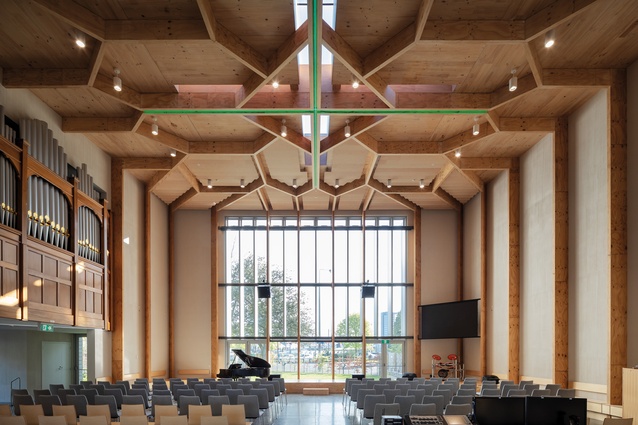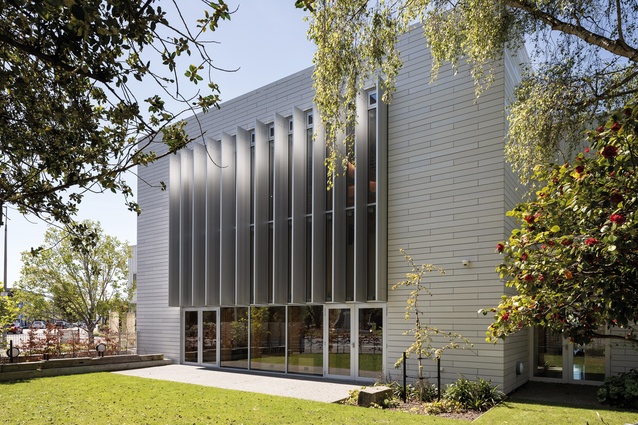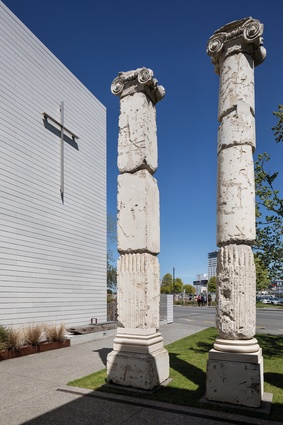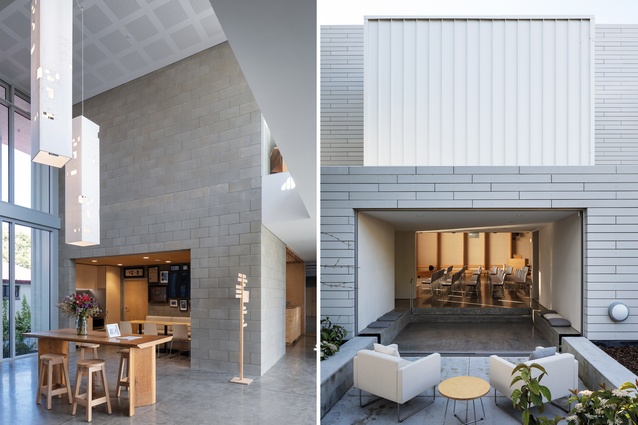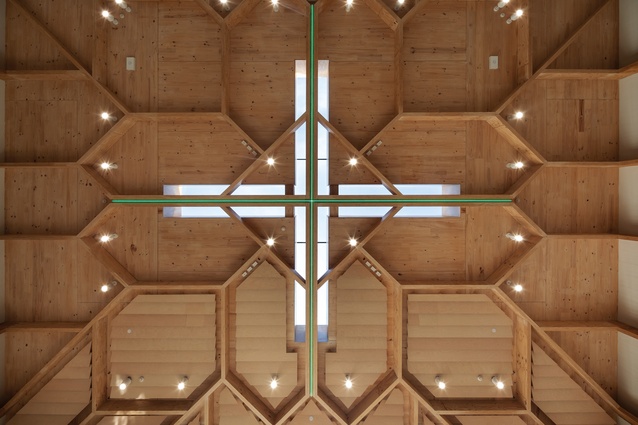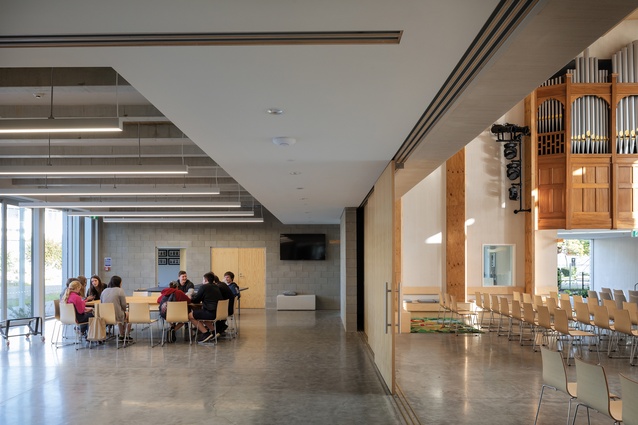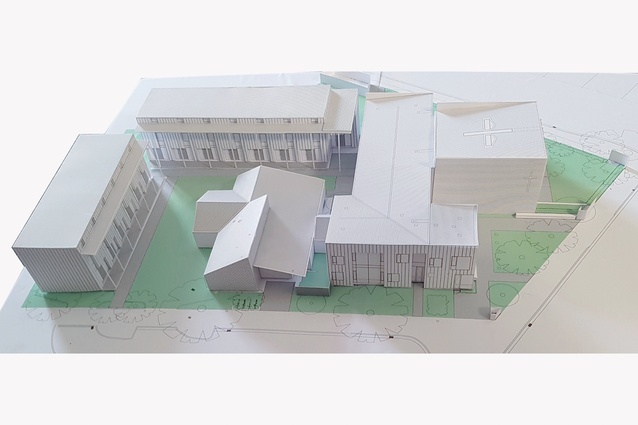Church in the village
Ian Lochhead explores the multi-purpose cycle of living, work, worship and service to the community in Christchurch’s Oxford Terrace Baptist Church by Andrew Barrie Lab.
In one of the great disruptive gestures of 20th-century architecture, Frank Lloyd Wright replaced a traditional Gothic Revival church in Oak Park, Illinois, with a geometric, abstract structure in which the worship space was a blank-walled cube illuminated from above. Wright’s 1908 Unity Temple changed the way in which religious architecture was understood from that time on and the simple equation of deciding whether a church should be classical or Gothic in style was exploded forever. The inwardly focused, square-plan church into which light streams from above, has been reworked many times over the last century.
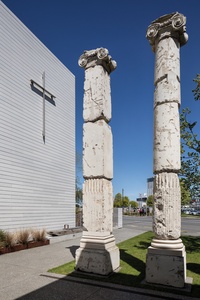
Variants, in which top lighting is replaced by walls partially or, in some cases, fully glazed, as in the Siren’s chapel at Otaniemi, have added new dimensions to this basic type. In New Zealand, the ordering principle of an underlying square plan can be seen in buildings as different as James Hackshaw’s Upland Road Chapel in Auckland and John Scott’s Futuna Chapel in Wellington. Christchurch’s new Oxford Terrace Baptist Church carries this tradition into the 21st century.
The Baptist Church has had a presence in central Christchurch since 1863, although the previous Oxford Terrace church, designed by E.J. Saunders, was not built until 1881. Its brick structure was typical of its era and, like many Baptist churches of the period, it had a pedimented, classical portico facing the street. Damaged in the 2010 Canterbury earthquake, its structure failed completely in the severe Christchurch quake of February 2011.
Although the building was insured, the funds available were sufficient to cover only about a third of the cost of a replacement building, meaning that, from the start, financial stringency and imaginative funding solutions were drivers of the project. There was also a desire to go further than simply replacing existing facilities in order to create a space for worship within the framework of a community that was alive and active throughout the week, and described variously as a ‘village’ or a modern-day ‘monastic community’, although the latter designation suggests a degree of austerity that is largely absent from the new complex.
Expressions of interest were sought from three architects but Andrew Barrie Lab quickly emerged as the practice that demonstrated a strong sympathy for, and clear understanding of, the church’s needs. Plans were finalised in 2016 and the first stage, comprising the worship space, contiguous hall, church administration offices, café and offices for lease on the upper floor, was opened for worship on Christmas Eve 2017. A second stage will incorporate apartments and additional commercial office space to the east of the new structure in order to create a sheltered, cloister-like space between the two blocks.
While the previous church faced north towards the Avon River, the new building is oriented towards the west and Madras Street, although the main auditorium is set back from the street within an enclosed garden. The main entry to the complex is via a path that leads past fractured, re-erected columns from the 1881 church, an ever-present reminder both of the earthquakes and of the congregation’s long history on this site.
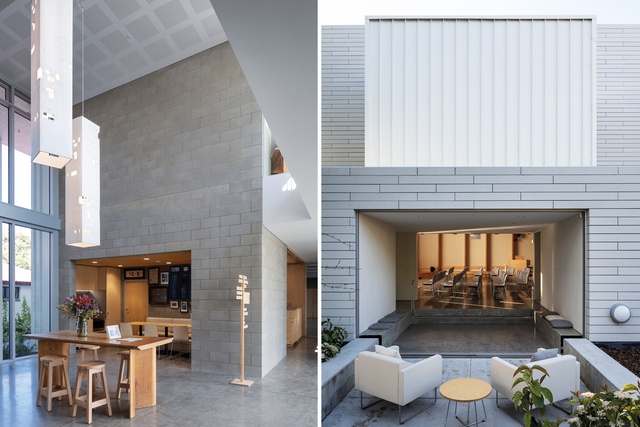
A double-height glass wall reveals the entrance foyer beyond but, on entering, visitors are confronted with a block wall only metres in front of them, forcing a decision over whether to turn left towards the foyer and the more secular activities of administration and café, or to turn right past the baptistery to the auditorium.
The cubic form of the auditorium creates a light and airy space, with its timber structure of splayed laminated columns clearly expressed, as is the lattice of timber beams forming the roof. The western wall is fully glazed and, in spite of the brise soleil on the exterior, blinds are required to manage the impact of the late-afternoon sun. Wall surfaces are brushed plaster that diffuses light and provides a soft effect.
The floor, as throughout the complex, is of raw, polished concrete. The 1891 organ, recovered from the ruins of the old church, is positioned on the southern wall of the auditorium, above an opening that leads towards the garden chapel. The treatment of the auditorium sets the tone for the entire complex. Relocatable staging, a moveable organ console and a full-immersion font, which can be moved in and out of the space, ensure that the auditorium can be used in multiple configurations.
The direct expression of simple materials gives the space an appropriate atmosphere of calmness and repose. Sliding doors along virtually the full length of the eastern wall allow for the auditorium to overflow into the hall or, indeed, for activities in the hall to extend into the auditorium. Traditional religious imagery, in keeping with Baptist practice, is avoided but an illuminated cross is integrated into the ceiling structure of the auditorium, its colours able to be changed in keeping with the seasons of the liturgical year by means of an app on the pastor’s phone.
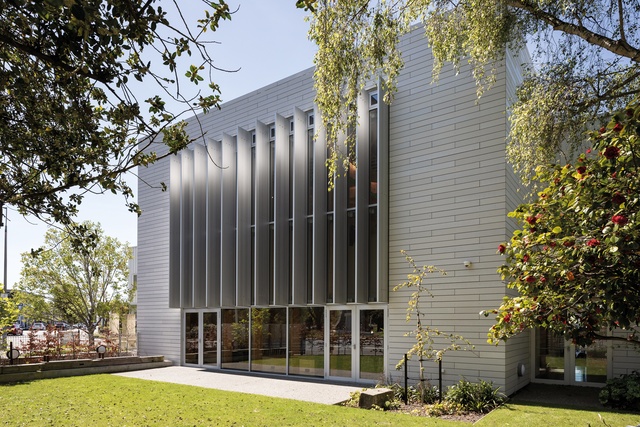
The auditorium’s illuminated cross is virtually the only colour accent in the complex apart from the inherent colours of the materials themselves. This gives the building a feeling of almost Cistercian quietude, in which everything superfluous has been stripped away. The sombreness of the raw block walls is relieved by the warmth of timber panels and the light that streams in from outside. As part of an overall aim to achieve a high level of energy efficiency, the bare concrete floors also act as heat sinks.
Within this pared-back environment, the continual presence of people coming and going animates the spaces. The occupation of the commercially leased offices on the upper floor by social agencies, the street-side Pillars Café, and the fact that users are encouraged to occupy the common spaces ensure that the life of the building continues throughout the week.
Elements of whimsy break out in the signage; beneath the sign for the café runs a text from I Timothy 5:23: “No longer drink water exclusively but use a little wine for the sake of your stomach”. Meanwhile, the lift sign, perhaps a little predictably, cites Luke 24:51: “He parted from them and was carried up into heaven”. Texts play a more serious role in the baptistery, where wooden ‘leaves’, bearing the signatures of past members of the church, hover above the font, forming an almost literal ‘cloud of witnesses’.
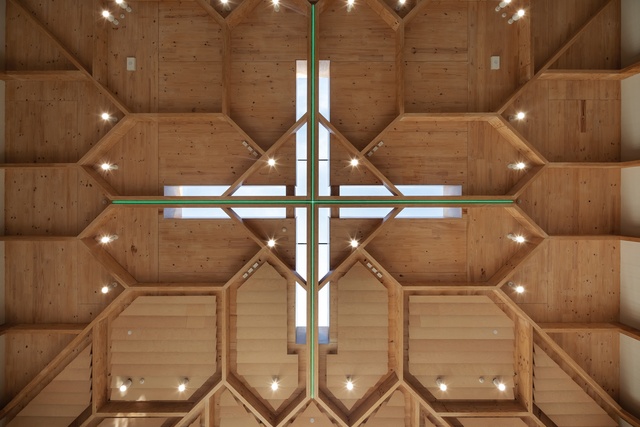
If, on the interior, budgetary constraints have been largely transcended, they are more apparent on the exterior. The auditorium is clad with a ceramic tile system that gives it a feeling of substance, but the ancillary spaces are wrapped in standing seam Colorsteel that seems insubstantial by comparison.
The rationalisation that the differing cladding systems give expression to functional differences between the principal parts of the complex cannot hide the fact that cost has ultimately been the determining factor. There is a paradox, too, in these contrasting systems; the vertical lines of the steel cladding are suggestive of the traditional board-and-batten exteriors of colonial timber churches, whereas the horizontal cladding of the auditorium is more like domestic weatherboards.
A full assessment of the Oxford Terrace Baptist Church will have to wait until the completion of its second stage but the new building has already made a significant contribution to the life of the city and it is clearly demonstrating that churches can be alive every day of the week, not just on Sundays.
This article first appeared in Architecture New Zealand magazine.


